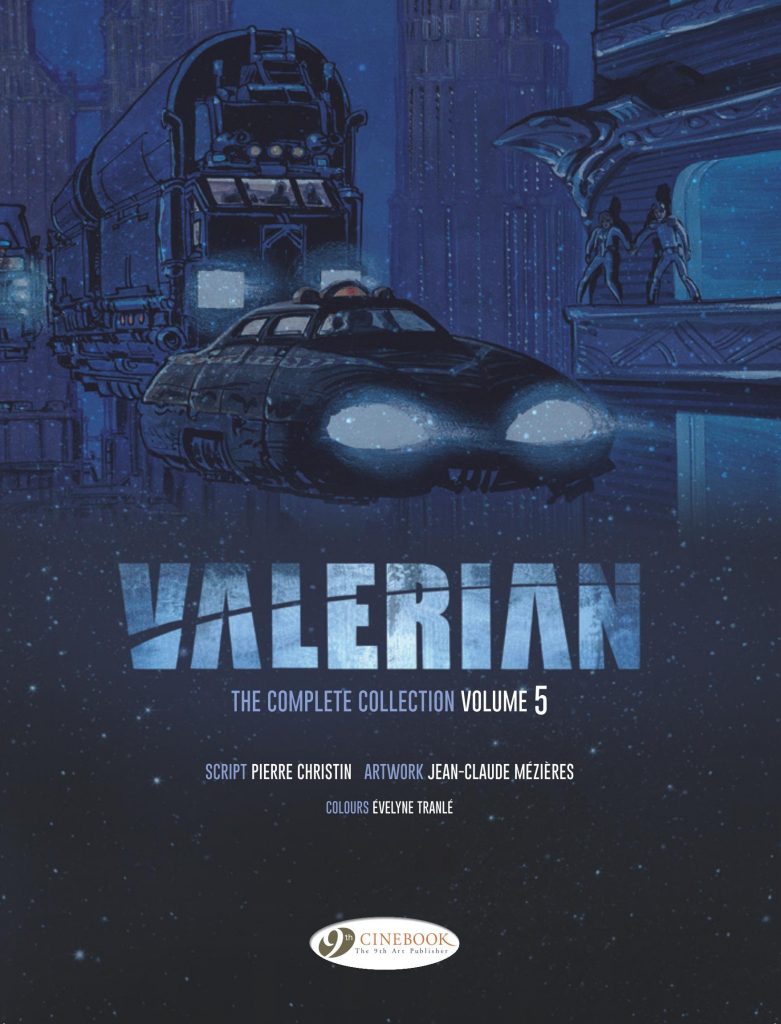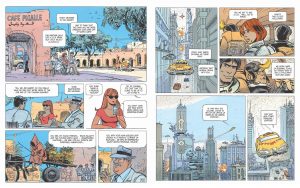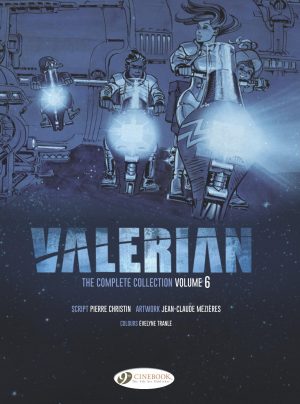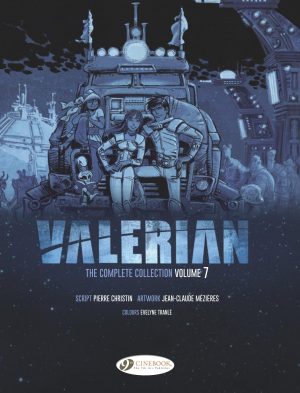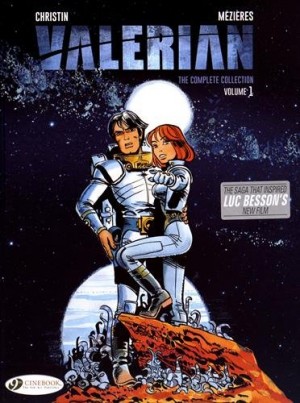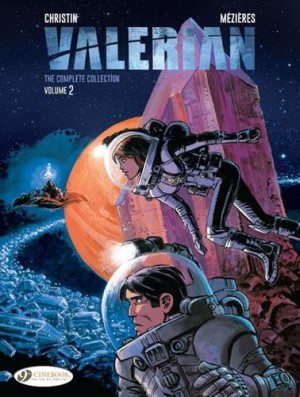Review by Frank Plowright
In the mid 1980s Pierre Christin took the brave step of addressing a continuity problem head on. In The City of Shifting Waters, his second Valerian and Laureline story, released in 1968 (see Complete Collection 1) he’d introduced a world after disaster in 1986, never dreaming he’d still be writing the feature as 1986 approached. As seen in Complete Collection 4, his solution was to completely reboot Valerian and Laureline. The pair no longer work for Galaxity, and must survive on their own wits, initially trapped on Earth during the events of On The Frontiers.
While Valerian and Laureline had steadily improved to their peak material in Complete Collection 4, Christin dealing with the 1986 disaster problem would lead to inconsistency plaguing the series until the end. It’s not evident to begin with as On the Frontiers is a very tidy piece of work, mixing Valerian and Laureline’s interventions in real world Cold War politics of the 1980s with events on a galactic space cruise (way before Doctor Who used the idea) and a plot concerning the end of Galaxity. In places it’s more James Bond than SF, and still reads very well, with Jean-Claude Mézières switching tidily from outer space action to ordinary scenes on Earth.
The Living Weapons, however, is as ordinary as any Valerian and Laureline adventure since the early days. There are occasional flashes of inspiration, such as the introduction of the Schniarfer, who’d reappear several times, but it’s the bantering relationship between Valerian and Laureline that carries the story a long way through a plot about them as arms dealers, eventually siding with an idiot centaur. The meandering plot seems to have had no effect on Mézières, who produces some glorious Western style scenery, and again creates magnificent aliens.
The Circles of Power is a leap back to form, Christin now more overt with his criticism of contemporary society. Ecological concerns are raised, but the primary motivation is considering how society can survive when its administrators are irredeemably corrupt. What can anyone believe? Equally, when no-one can be believed, how can even treachery flourish? Concerns about media manipulation and fake news in the 21st century make this even more relevant than when produced in 1994. Part farce, part mystery, and always engaging, this doesn’t rank with the absolute best Valerian and Laureline, but did show Christin’s interest remained.
All these hardcovers contain a wealth of background features from the knowledgeable Stan Barets. Here he explains similarities between The Circles of Power and the movie The Fifth Element, to which Mézières contributed set designs, explores Christin’s periods living in the USA and asks if we prefer Valerian or Laureline, offering a case for both. Logically enough, Complete Collection 6 follows, containing a five star Valerian and Laureline album.
